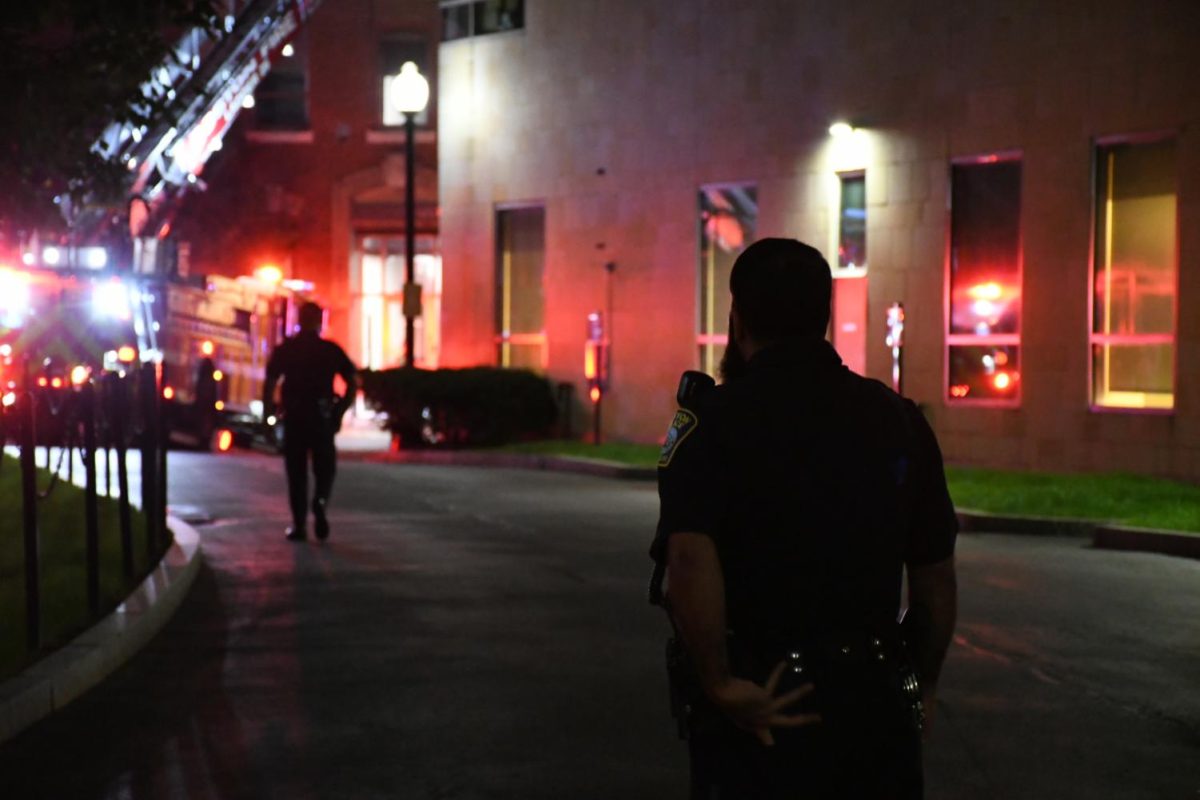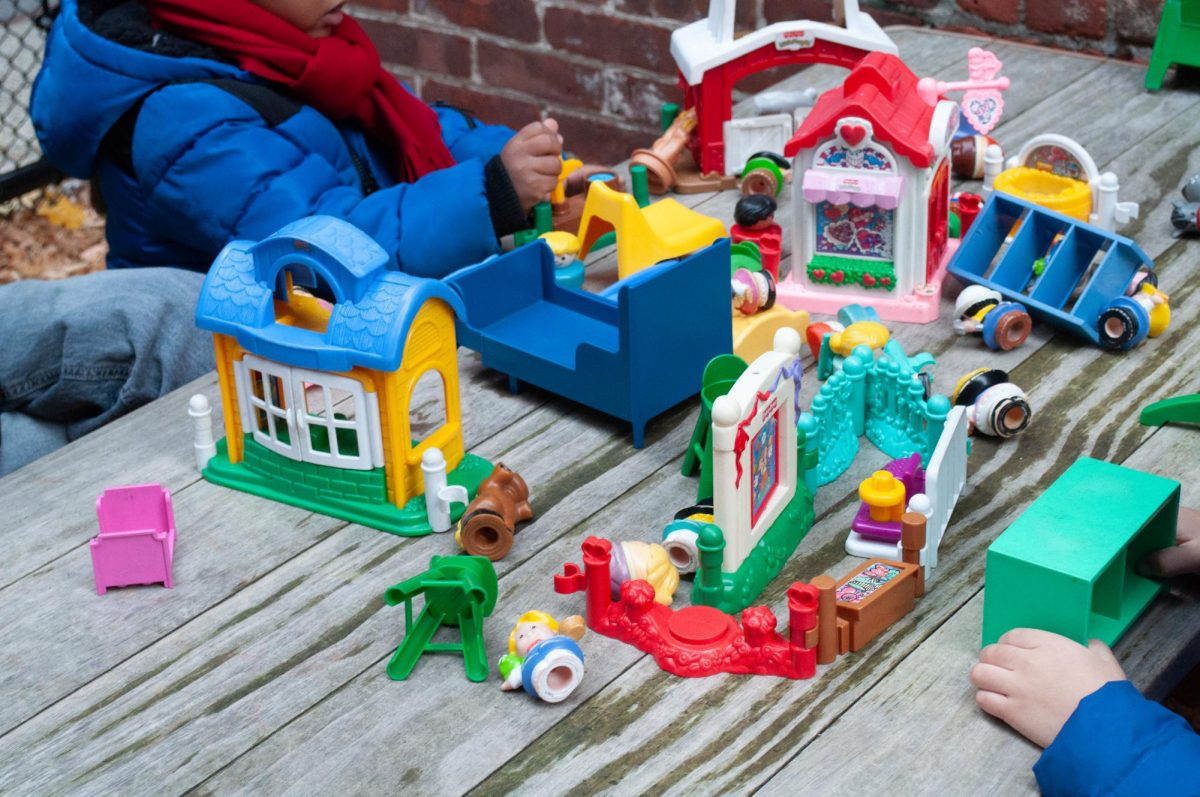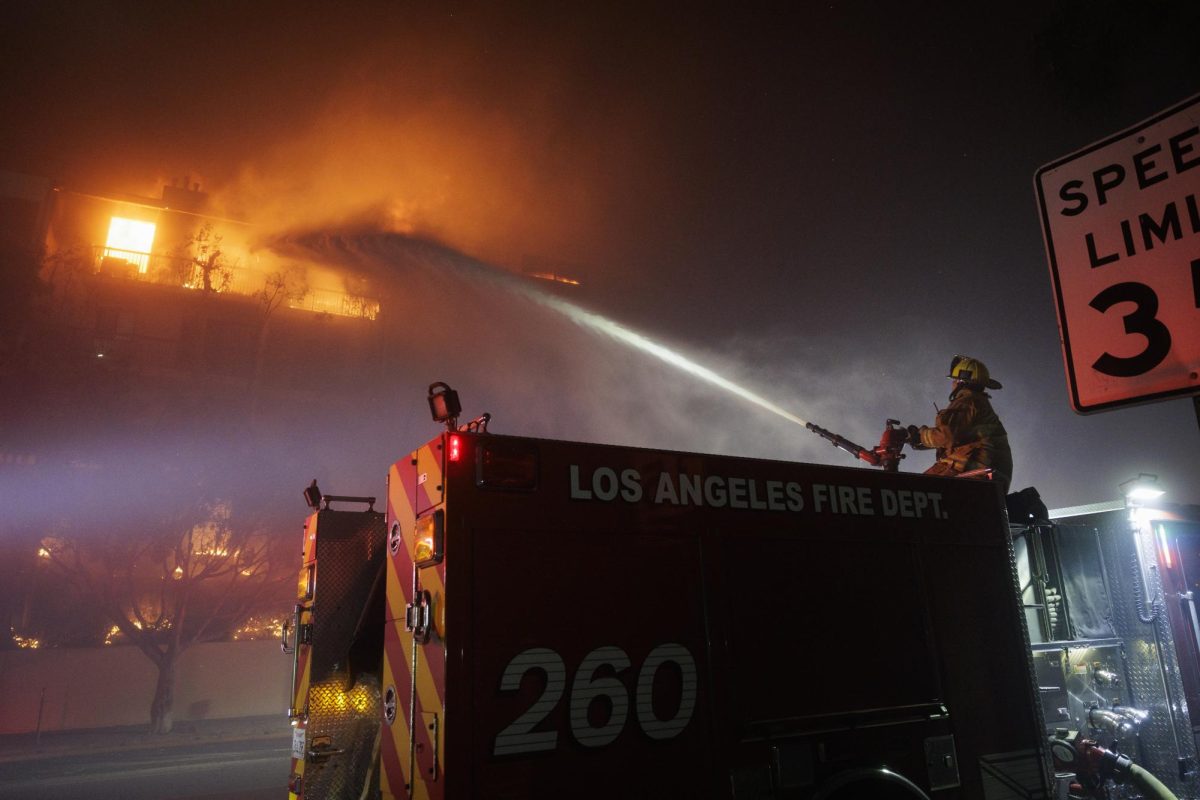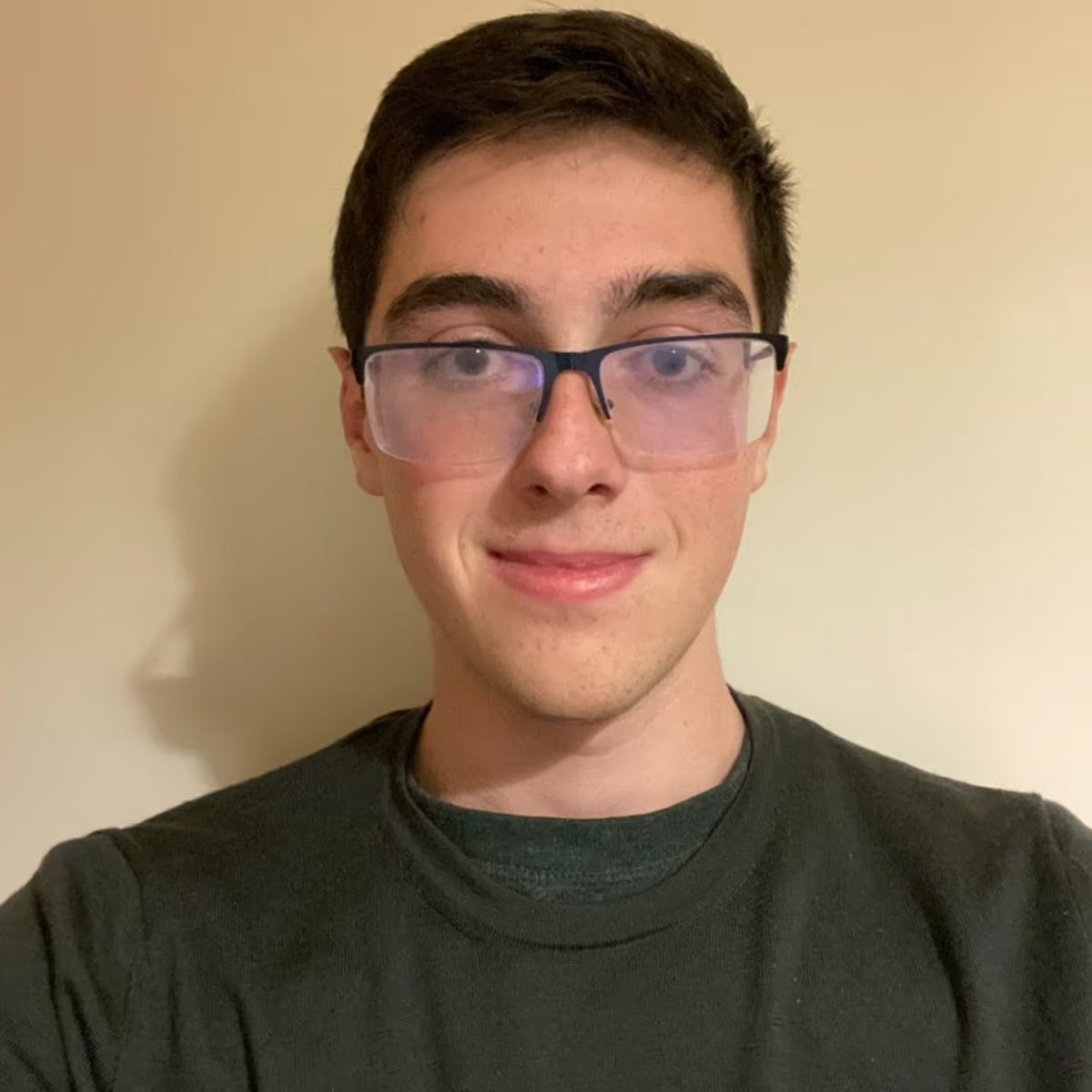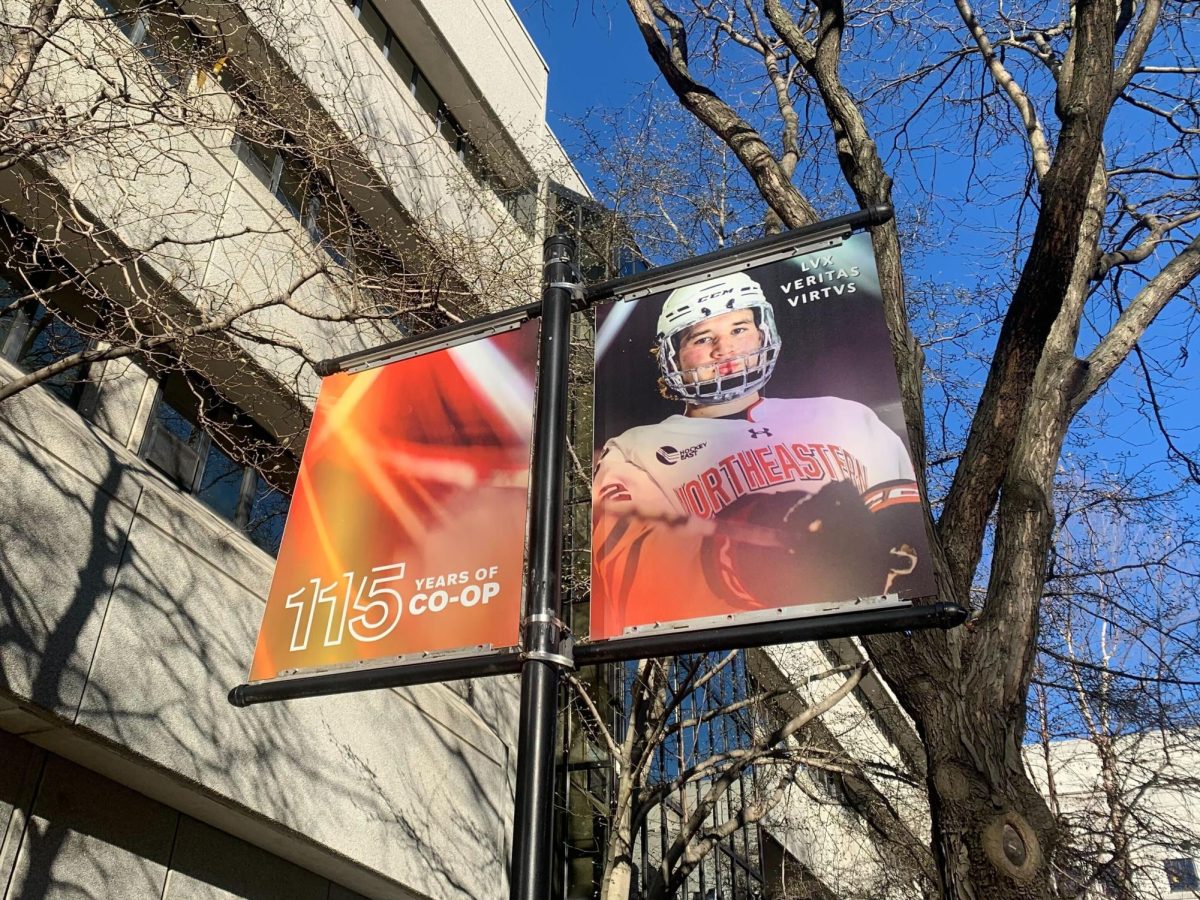By Todd Feathers, News Staff

On a Thursday afternoon in October, Jack Grinold tucked into a free steak lunch at the $6.2 million estate Northeastern owns and operates in Weston.
The mansion, known as Henderson House, was donated to the university in 1961 by a former trustee. It has gone on to serve as the setting for elegant alumni functions, among other events. And on this particular day, it played host to members of the Frank Palmer Speare Society, some of the university’s most prized donors.
Grinold and the others mingled for an hour in one of the residence’s 36 rooms, swapping old memories before sitting down to lunch: a choice between a fish plate or an “excellent” filet mignon.
“This is the ritz,” Grinold said, recalling the luncheon. “You just look around and you go ‘Oh my god, I wish I was born to this.’”
Grinold, a retired athletics department official, still works part-time out of his old office in Matthews Arena. He has donated more than $1 million to the university over the course of his life. Northeastern is a beneficiary of his will and the rowing teams’ training facility now bears his name.
All of this places him in a select group of wealthy, generous benefactors that forms the cornerstone of the school’s $1 billion fundraising campaign.
The most ambitious fundraising effort in the university’s history, the Empower campaign, if successful, will put Northeastern in a class alongside perennial top 50 schools like Boston University, New York University and Georgetown University in terms of its money raising capacity.
It still falls far short, however, of the colossuses of higher education, such as Harvard University, which this year announced a $6.5 billion fundraising campaign, the largest of any university in history.
“Saying you’re going to raise a billion dollars puts you in a different club … it says you’re in the big leagues now,” said Marybeth Gasman, a professor of higher education at the University of Pennsylvania and author of “Engaging Diverse College Alumni: The Essential Guide to Fundraising.”
In some respects, the Empower campaign faces daunting challenges. The university has never attempted such a large campaign and lacks the established donor base of comparably ranked schools. Of the top 50 schools in US News & World Report’s 2013 rankings, Northeastern has the eighth lowest rate of donations; only 12 percent of graduates give to the university.
But in reality, the result of the campaign is all but a foregone conclusion. The development staff will almost certainly meet and surpass the goal of $500 million in philanthropic donations and $500 million in government and corporate research funding.
“Most institutions, and especially I would assume a place like Northeastern, that they would already have raised a substantial portion of that money before they announced it publicly,” Gasman said. “More than likely they’ve had a couple of outside companies do a feasibility study and I don’t think that they would announce a campaign like this if they didn’t think they could achieve it.”
In fact, as of Tuesday, Nov. 12, three days before the public launch of the campaign at the enthusiastically named “Empowerfest” event, Northeastern had already secured more than $330 million in philanthropic donations and $200 million in research funding, according to Joe Donnelly, a vice president and campaign director at the university.
The top 5 percent
Last weekend, Cabot Center was transformed for Empowerfest, and the turf field was buried beneath a smorgasbord of booths hailing the university’s prized achievements.
Here, a 30-foot dome enshrining students’ successes in video game design. There, a student waiting to describe the university’s entrepreneurial social justice work in Latin America. And near the center, a group of students and their parents captivated by a robotic contraption. All the while, the harmonies of an acapella student group drifted from a cordoned off corner.
Placed strategically throughout the expo were little silver podiums emblazoned with the slogan of the day: “Give to what you love.”
On Friday, when faculty and staff were invited to the event, donations averaged around $25 each, said Bill Woodman, director of the Northeastern Fund. One professor deposited his contribution in the form of a water bottle full of loose change.
But since 2009, four years before the polished public veneer of Empowerfest, the real fundraising work has been quietly ticking along behind the scenes, across the nation and around the world.
In sizable fundraising campaigns like Empower, 95 percent of the money will likely come from five percent of the donors, Donnelly said. “Therefore, the university’s investment needs to be in securing those gifts” of $100,000 or more.
And so the university’s key fundraisers – Donnelly, President Joseph E. Aoun, Senior Vice President of University Advancement Diane MacGillivray, the 151 employees of the development department and the deans of each college – have hosted alumni galas in London and Paris, held dinner parties in New York and Philadelphia, and consulted individually with alumni across the globe who have donated large chunks in the past, and may do so again.
It is an expensive and time consuming endeavour. Since the Empower campaign began in 2009, the university has spent more than $13 million each year on fundraising-associated costs, according to tax documents. Most of it has gone towards the salaries of development staff.
MacGillivray, who heads the school’s development efforts, recently returned from a three week, globe-trotting trip that took her to donors in California, Florida, England and elsewhere.
“I’m either on the phone or out meeting with people about 70 percent of the time,” she said.
Fundraisers responsible for gifts below the $100,000 level may be responsible for 125 or more potential donors, Donnelly said. But as the size of the gifts increase, so does the time and attention university officials, staff and faculty devote to individual donors.
“You can’t just after 20 years reach out to somebody who graduated and say ‘Now we need you to give because it’s important to US News [& World Report rankings],’” MacGillivray said. “You really need to help your alumni, no matter where they are in the world, understand why it matters to them. And that takes a little bit of time.”
That attention comes in a variety of different forms. Alumni in Florida often attend the annual Red Sox vs. Northeastern baseball game. Some individuals, like James Healy, who has established a $4 million trust with Northeastern as the beneficiary, have dinner with fundraisers or talk after tennis matches and during rounds of golf.
“I have relationships with perhaps two or three different people who are involved with nurturing alumni,” Healy said. “Typically it’s a fairly long term relationship.”
And in the case of the university’s largest donors, their prospective gifts warrant several private meetings with Aoun himself.
Aoun’s legacy
In September 2012, the university announced the largest gift in its history: $60 million from alumni Richard D’Amore and Alan McKim for the business school. The announcement came, not coincidentally, several months after Northeastern first publicized the Empower campaign.
Several days after the donation was announced, the large banner that still tops the entrance to Dodge Hall was unfurled, proudly proclaiming the existence of the newly christened D’Amore-McKim School of Business.
In interviews, donors and fundraising officials at the university singled out the business school donation as the turning point in the campaign. D’Amore and McKim set the example, they said, that inspired others to commit as they had never committed before.
But the naming might never have happened if not for one conversation and Aoun’s punctual insight into the donor’s thinking.
Recalling the meeting, D’Amore described himself as a low-key guy who had no desire to see his name on one of Northeastern’s most prestigious schools.
But not long before the business school donation was finalized, Aoun approached D’Amore, the son of a firefighter, with an argument that struck a chord with the successful venture capitalist and convinced him to drop the issue of anonymity.
“He said something to the effect of ‘I didn’t know it was just your name on the school. I thought it was your family’s name, your father’s name, your grandfather’s name,’” D’Amore said.
And that was it. D’Amore and McKim’s names went on the school and they became the posterchildren for donating to Northeastern.
“The gift is about the person. You’re capturing the passion of the person, his or her interest,” Aoun said. “You need to have built a relationship of trust and openness that will get you to this level.”
For the highest bracket of donors the burden of fostering those relationships, and nurturing them to fruition in the form of donations, lies on the president.
Shortly after joining the university in August of 2006, Aoun traveled to Texas to have dinner with George Kostas, the highly successful founder Techno-Economic Services Company and Northeastern alumnus.
Kostas had previously donated $2 million to the university for a nanotechnology center, but he was considering a much larger gift, one he wanted to make sure the new president would understand and steward.
The two spoke for nearly three hours, much of it driven by Kostas’s concern about the continuing threat terrorism posed to the US. Several months later, they met again in Texas and agreed to a donation of $12 million for what became the Kostas Research Institute for Homeland Security, Kostas said.
“Dr. Aoun and I spoke the same language, on the same page,” he said. “The donor has to be convinced that Northeastern can deliver on their commitments.”
D’Amore described Aoun as “a poised man with endless energy.” He said the president is not the kind of man who gets nervous, even when asking for large sums of money.
Such qualities will likely serve Aoun well through the homestretch of the campaign, when he must identify prospective donors, build new relationships and conduct each conversation with the same zeal and enthusiasm that has helped him bring unprecedented levels of financial support to the school.
“It’s a tremendous amount of stress,” Gasman said, referring to a university president’s role in a large fundraising campaign. “In many ways it is [the president’s] legacy.”


